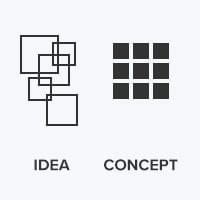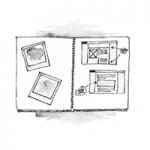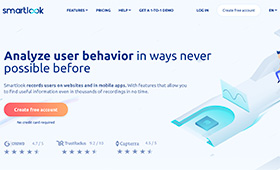How Big Data Can Help Designers Create a Better UX
Most experienced designers do have a fair idea of what constitutes a great UX design. This instinct driven work has been the norm in the industry since its inception. But there is another big hurdle that designers face when designing the UX. They have a hard time proving that a certain feature would work better than others and that users would like it more.
This problem stems from not having anything other than their own expertise in the field and a variety of inconclusive tests to back their claims. This makes it difficult to gain the trust from the product development team. Secondly, and more importantly, they are less certain that a feature might create an impact with the user.
There are several ways of testing the likability and success of designs like A/B testing. Although A/B testing points out which experience is better of the two, it doesn’t show you whether you’re missing out on an even better experience. It doesn’t tell you what the best possible UX for this product looks like. The current testing methods are limited at best and the biggest bet at solving these problems lies in the field of Big data.
Big data is being used everywhere. A lot of companies using big data understand that analysing as much information as possible is much more beneficial than just relying on the expert opinion. Data substantiates a claim and it helps you transform the way you work in a big way. But how can designers benefit from it and create better and much more mesmerising experiences?
Big Data & UX
UX revolves around creating the most immersive experience that enhances the overall feel of the product and increases its chances of success. In turn, this will result in a higher adoption rate. A bad UX design can definitely doom your next project, no matter how good the idea or concept behind it really is.
Although there are some commonalities in the things that do work in each UX design, enhancing the experience is mostly down to testing hypothesis. But big data in UX design can change it all.
The biggest advantage in using Big data is that the data is all encompassing, diverse and more importantly, generated by the users themselves. Nowadays you can easily obtain data on a wide variety of aspects. Screen interaction vantage points, average time spent on a single feature, features that get clicks are just a few of them.
When this data is tapped, tracked, utilized and presented in a more usable manner only then can it be deemed Big data.

LinkedIn’s old interface made it impossible to do a variety of functions like accepting more than a couple of connection requests while staying on the same page. LinkedIn has undergone a redesign based on the vast amounts of user data it started leveraging.
According to a research by website.grader, out of nearly 700 million websites populating the web space, a harrowing 72% fail to attract new visitors. This happens often because of the websites’ lack of substance and just being there as silos of a particular brand.
They don’t offer anything in terms of a great experience to the user and if you don’t value your user then you are definitely in for a failure on all fronts.
What about mobile and big data?
A recent report on Mobile App usage trends for 2016 by Comscore, has shown that the time spent on apps outpace the time spent on mobile web by a margin of 7:1. Apps have to be downloaded and are harder to market. Apps are having more difficulties of getting users onboard compared to the mobile web. The ratio signifies that if you offer a great experience, the user will definitely stay and will repay you back in loyalty towards your brand.
With the growing popularity of the mobile platform, apps will definitely grow in numbers. The demand for a great user experience would get even more exemplified.
The amount of interaction that people have with these apps and mobile web generates a vast amount of data. This data, if utilized and scrutinized for successive user patterns, can definitely offer great value to the designers. In the end it will help them to design a better UX.

Facebook now allows you to login just by clicking on a small thumbnail that contains your profile’s display picture. This simple yet powerful UX design maneuver will help users to login faster and make them come back more frequently.
In 2017 and beyond, designers would be challenged to the core as they would face the daunting task of creating ever more complex UX designs to serve user needs. Users now demand more from UX than just easier navigation and precision in screen taps. There are numerous new factors to take into account. Integration of maps, a better in-app recommendation and a better and personalised search engine are just a few of them. People expect these as part of the next generation of UX designs.
Even the app icon is now a great part of the UX design and it has to be designed like a logo. The stakes are quite high and what will work and what won’t highly depends on how a designer uses big data.
Concluding
Intuition is definitely a good thing and no one is undermining your experience as a great UX designer. The newer demands however, call for a more precision-based approach. This would only be possible if big data comes into play more often. It’s when designers and development companies start to understand its importance in the success of the final deliverable product.
If you are looking for other design techniques to improve the overall User Experience, we do have an article about that as well. Enjoy the reading!







No responses yet to “How Big Data Can Help Designers Create a Better UX”